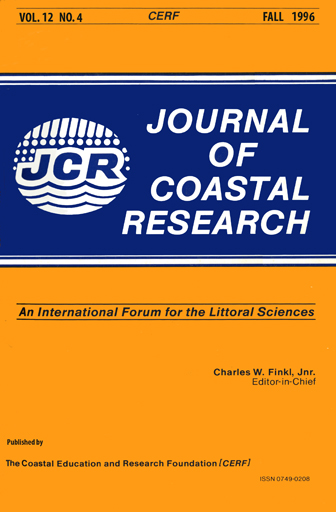Controls of Storms and Typhoons on Chenier Formation in Komso Bay, Western Korea
Keywords:
Tidal flat, southeastern Yellow Sea, sedimentology, macrotidal coast, typhoon TedAbstract
The high tidal flat of Komso Bay shows a typical chenier or shelly sand ridge, about 860 m long, 30-60 m wide, and up to 1.8 m high. Vertical sections of trenches across the chenier show gently landward-dipping interbeds of coarse to medium-grained shelly sands. Based on aerial photographs taken for the penod of 1967-1989, sand shoals on the tidal mudflat migrated landward to form the chenier. Typhoon Ted In 1992, entering the southeastern Yellow Sea, forced the chenier to migrate further inland, resulting in a displacement of up to 11 m in a few days. Field measurements on the morphology of the chenier over a two-year period from 1990-1992 indicated that winter storms are chiefly responsible for the migration at a rate of 4-5 m per year. These facts suggest that strong waves and currents under the conditions of typhoons and/ or storms have dominantly forced the chenier to migrate landward onto the muddy high tidal flat.


